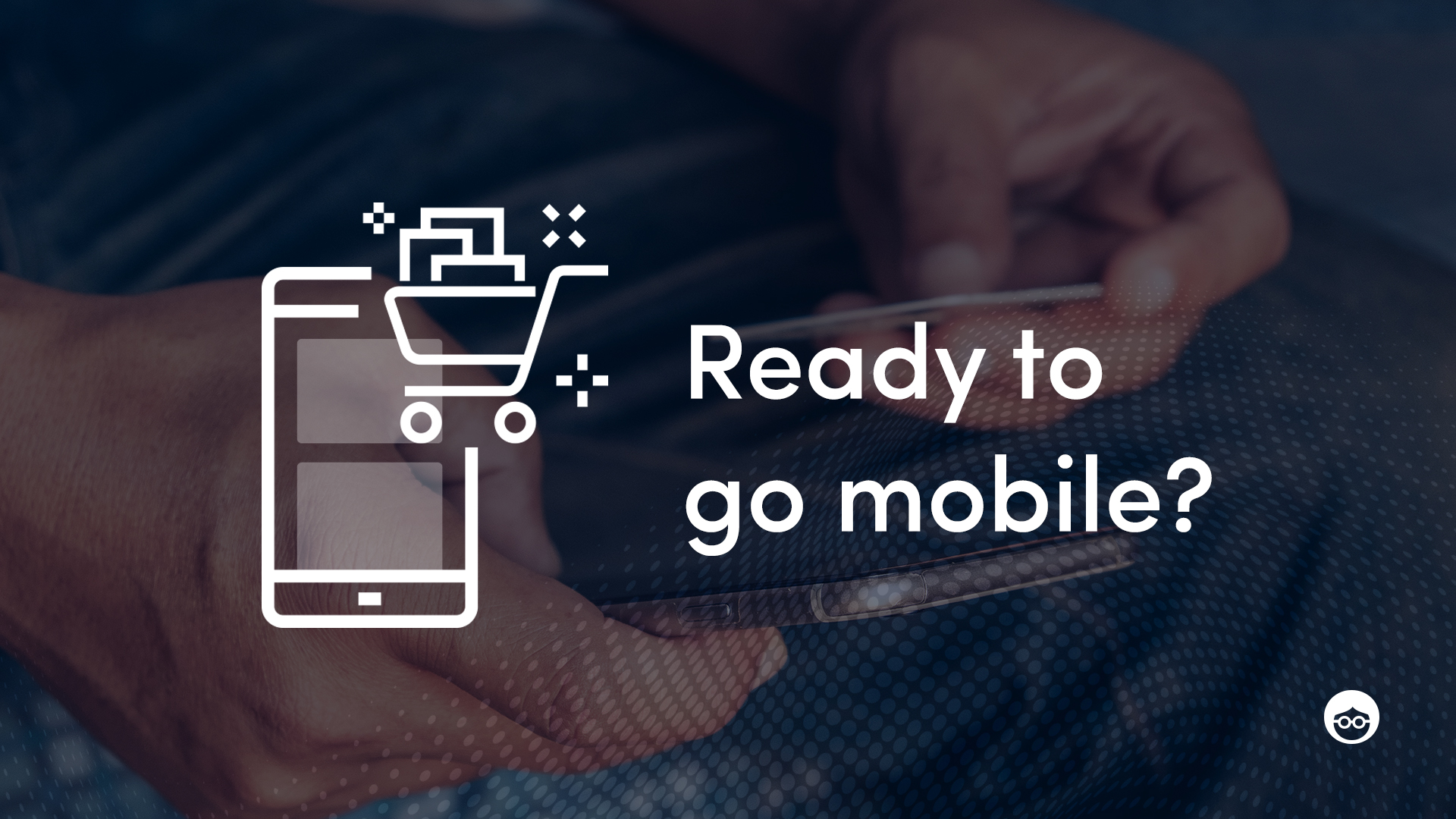7 Mobile Marketing Strategies for Your Ecommerce Business

Thinking of taking your mobile marketing strategy to the next level in 2020?
That’s probably a good idea.
Gartner, one of the world’s biggest research brands, found that marketers will be driving around 80% of their engagements through mobile websites by next year (2020).
And a good mobile experience could make or break your chances of digital success.
So, how do you make sure you’re delivering the engaging moments your customers are looking for?
One option is to make sure that you’re keeping up with the latest strategies and solutions in the mobile marketing world. As the consumer-driven environment becomes increasingly flexible and digital, mobile campaigns are evolving to suit a new era of purchasing.
Here are 7 practical ways you can get ahead of the curve and outshine your competition with an exceptional mobile marketing strategy in 2020:
- Go Local, Hyper-Local
- Tune in to Voice Search
- Experiment with Reality
- Try Upgrading Customer Service with Chat Bots
- Take Video to the Vertical Dimension
- Get Intelligent with Your Mobile Marketing
- Get Your Customers More Involved
1. Go Local, Hyper-Local
You’ve probably heard of local marketing before – but what about hyperlocal targeting?
Going “hyperlocal” with your mobile marketing campaigns is about drilling down into your buyer personas to find out exactly who and where your customers are. In a mobile marketing strategy, this local focus is particularly useful at drawing nearby clients to your brick and mortar stores.
One technique of hyperlocal targeting is “geofencing,” where you mark out specific areas where you want to serve your advertisements to a particular geographic audience. Whenever someone ventures into your fenced area, they get a mobile push notification sent through an app, text message alerts or targeted advertisements on social media.
Burger King once took advantage of this strategy to geofence Mcdonald’s locations. Every time a customer strayed too close to a McDonalds; they got a Burger King voucher pinged straight to their phones. Sneaky.
The opportunities available with this kind of highly-focused targeting are endless. For example, Facebook advertising provides marketers with hundreds of different ways to target people on their platform alone. With so many targeting options available, there are solutions for all kinds of brands.
For example, you could send an alert straight from your taxi company whenever someone visits an airport. Alternatively, clothes companies could send push notifications to customers that are browsing their street or Golf companies could target people playing on a nearby golf course.
2. Tune in to Voice Search
Voice search is rapidly emerging as a valuable part of the digital marketing world. The arrival of solutions like Google Home and Amazon Alexa have transformed the way that customers look for information and products.
In fact, voice searches are set to account for 50% of all searching by next year alone!
Right now, around a third of all smartphone users are reliant on voice search to help them track down companies and products around once a week. Additionally, 71% of people under the age of 29 use personal assistants.
Bottom line…
If you’re planning on upgrading your mobile eCommerce strategy for 2020, then bringing voice search into the mix could be an excellent solution.
But the question is…
How do you optimize for voice?
It’s easy:
- Get to know your customer’s language: Gather information from your sales and marketing teams, reviews, testimonials, and customer queries to find out how people are searching for your products and services.
- Be conversational: Remember to use a conversational tone with long-tail keywords. For instance, instead of ranking for “Digital Marketing New York,” try to rank for “Best digital marketing company in New York.”
- Answer customer questions: Most people use their smart assistants to get answers to questions. If you can rank for queries like “Where’s the best pizza near me”, you’re already on the track to success with voice search.
3. Experiment with Reality
This might sound like a bit of a strange area to explore – but bear with me.
Concepts like augmented and virtual reality might be relatively new – but they’re also very appealing to the modern customer.
For example: 500 million people downloaded the AR game “Pokemon Go” in September 2016.
While augmented and virtual reality concepts have appeared most commonly in the gaming environment up until now, they do present opportunities for eCommerce brands too. For instance, the furniture brand, Wayfair, allows users to access its app to place augmented reality versions of furniture pieces in their home. That way, customers can see whether the furniture they want to buy goes with their existing décor.
Companies like Dominoes Pizza have used similar strategies in the past to help customers visualize having a delicious pizza in their own home. As mixed reality technology becomes more effective, more businesses are sure to experiment with the benefits of these unique applications.
4. Try Upgrading Customer Service with Chat Bots
People aren’t just shopping on their smartphones – they’re looking for help too.
When your customer has an issue with a product or needs to ask questions about your service, they want a quick and effective way to get answers.
In a world where Facebook Messenger and WhatsApp make up a considerable percentage of the time spent on a smartphone, chatbots and other chat-focused customer service tools are an excellent opportunity for eCommerce stores to increase sales. Chatbots can help you to interact with your customers in an environment that suits them.
With chatbots, you don’t need to hire a huge selection of customer service reps to give clients 24/7 support. Instead, you can have clever machines that respond to consumer questions and offer information in an instant.
Sure, chatbots might not be a complete replacement for immersive human service – but they have their benefits. You can even use a chatbot as a middleman to reduce the number of questions that go through to your service team.
If you’re looking for a list of great chatbot tools then I recommend you check out this article.
5. Take Video to the Vertical Dimension
You don’t need to be a marketing guru to know that video has value.
Things like video customer testimonials, ‘inboxing videos’ and video reviews can not only help promote your eCommerce brand but also reduce buyer hesitation.
In fact, mobile video consumption is rising by up to 100% every year. However, your customers might not be viewing your videos the same way that they used to.
Around 94% of mobile users hold their phones vertically, while many animations and videos are still designed for horizontal or square-based viewing. Going forward, companies will need to think more carefully about how they can adapt their videos to be suitable for mobile-first viewing.
The good news?
There are plenty of tools out there that can help, including Instagram, which automatically allows businesses to capture video vertically for their target audience.
So, next time you’re shooting content for your social media channels, website, or blog – go vertical!
6. Get Intelligent with Your Mobile Marketing
We’ve already discussed the benefits of chatbots for your mobile marketing strategy.
But, what if you took that investment into intelligence to the next level?
Only around 23% of businesses have incorporated artificial intelligence into their service or product offerings today. Which means that your company has an excellent opportunity to get ahead of the curve.
In the mobile marketing world, AI presents unique advantages to marketers that want a behind-the-scenes look at the complicated purchasing journey. Used as part of your marketing campaign, AI can help you to see what steps your customers are taking to get to the point where they feel comfortable buying your products and services.
As the mobile marketing landscape continues to evolve with the arrival of virtual assistants, 5G connectivity, and more, AI is your chance to gather useful data on what your customers actually need from you. Some businesses are even experimenting with sentiment analysis to help them figure out how certain customer service strategies make audiences feel.
7. Get Your Customers More Involved
Finally, there are few better ways to get your customers invested and involved in your digital marketing strategies than to make them a bigger part of your campaign.
User-generated content is an excellent opportunity to strengthen your marketing strategy and give your team access to more engaging content for your audience. Remember, research tells us that recommendations from friends and family are way more meaningful than advertisements from brands.
Even better.
User-generated campaigns are easy to implement as part of your mobile campaign. For example, you could get your audience members to download an app that allows them to vote on an important question or sign up with a chance to win something.
Having your audience download an app gives you new opportunities to engage with them through their mobiles, while the voting aspect allows the customer to get invested in your brand. For instance, look at the Do Us a Flavor campaign from Walkers, which received 1.2 million entrants from Walkers lovers hoping to win a chance to choose the next flavor of their favorite snack.
You don’t necessarily need to get your audience to download an app to get them more involved. Have them vote on easy-to-use polls on your website or social media pages instead. Alternatively, send them links to competitions in their SMS inbox or email.
Ready to Go Mobile?
We’re living in an age where virtually everyone has a smartphone in their pocket.
If you’re not connecting with your audience through an engaging mobile marketing strategy, then you’re missing out on an opportunity to reach your customers wherever they are.
With the 7 tips above, you’ll have everything that you need to strengthen your mobile marketing campaigns just in time for 2020.
Are you ready to go mobile?











